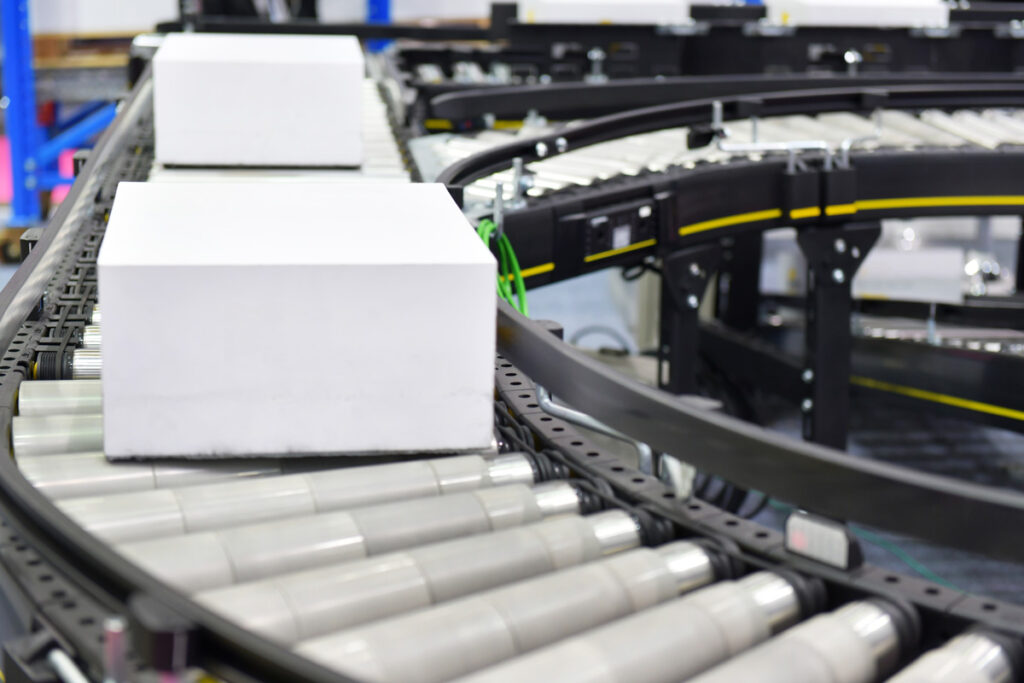Conveyor systems are an essential part of the material handling industry. They allow for the efficient and safe transportation of goods from one location to another, eliminating the need for manual labor. A wide variety of conveyor systems are available for different types of applications, such as roller conveyors, belt conveyors, bucket conveyors, and vertical conveyors.
Conveyors & Materials are industry leaders in creating custom solutions that meet the specific needs of their customers. In this blog post, we will discuss the different types of conveyor systems and how they can be used in different settings.
If your El Paso business requires a conveyor system, Conveyors & Materials has you covered. Contact us online or call (915) 584-5729 to learn more.
What Is a Conveyor System?
A conveyor system is always an option to move the necessary items required for production. However, individual systems are designed and created specifically for what needs to be transported – ranging from weight, size, and transportability. In production, these conveyor systems can assist with tasks such as sintering, assembly finishing, and washing since they are so crucial regarding material handling and production.
While some automated designs utilize chutes and rollers, which can be seen in retail shops or shipping facilities, they only account for a small portion of what’s out there because most manufacturers find value in an automated design over those types of setups due to it being faster than its counterpart.
Different Types of Conveyors
There are several factors to consider when designing a conveyor system for your company. The most important ones are the type of material being conveyed, the size of the product, and whether it needs special handling. Each conveying system has its own advantages and disadvantages that must be carefully weighed before choosing one.
Here are some of the common types of conveyor systems:
- Belt Conveyors
Belt conveyors are made up of an endless metal belt that moves at variable speeds depending on the desired needs. Belts typically move horizontally, but they can also climb or descend vertically to suit a particular application.
- Screw Conveyors
One of the first types of conveyors, screw conveyors, has been around for a very long time. This system works with a helical blade that transports liquid or granular materials – often inside tubes. The rotational speed at which the auger turns directly correlates with how fast material is transferred from point A to point B.
- Slat Conveyors
With flat slats attached to the chain, slat conveyors look similar to belt conveyors in some ways – but with wood replaced for a smoother ride and better movement of items. This conveyor system is perfect for assembly-based applications thanks to its mobility while keeping an object upright.
- Bucket Elevators
Vertical conveyors include bucket conveyor systems. They’re designed to transport flowable bulk materials—grain or fertilizer, for example—upwardly within rows of buckets called multi-sided containers.
- Monorail Conveyors
Monorail systems are perfect for transporting goods over long distances. These rail-based transport systems require a wire from conductor lines to supply electricity to the track, suspending it from the structure of the building. For monorails, utilizing space above production areas is common in design plans.
Top-Notch Conveyor Systems in El Paso
At the Conveyors & Materials Handling team, we offer a variety of customizable solutions to meet your business needs. Our company employs many professionals from various industries so that one of us can provide you with the right solution to meet your needs – no matter how complicated they may be!
If you are looking for a new conveyor system or want more information about what we do, contact us online or call (915) 584-5729 today.
